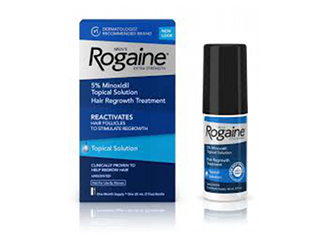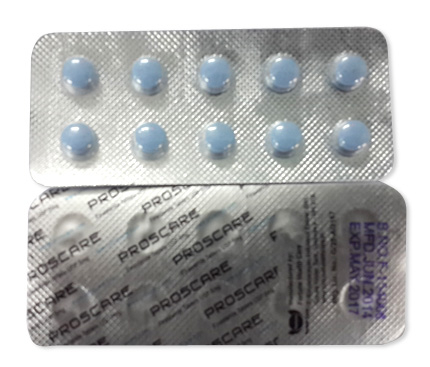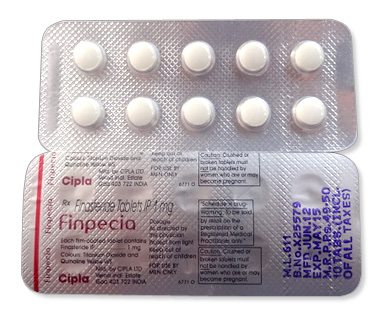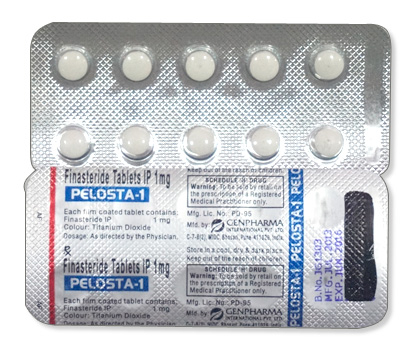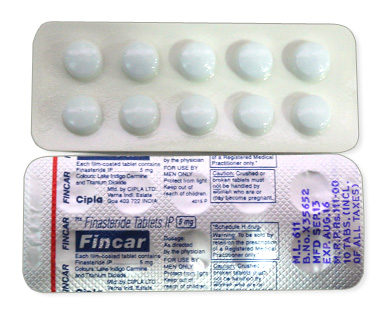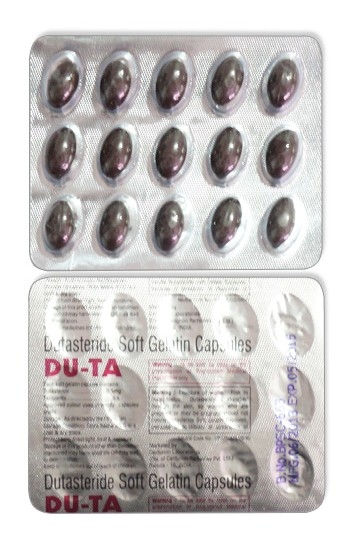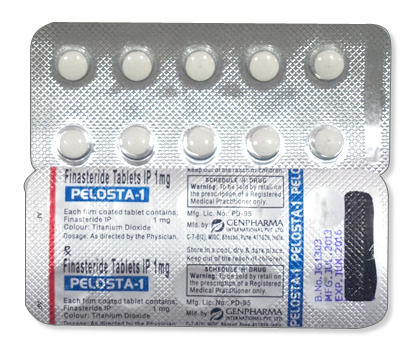
Finasteride
- In our pharmacy, you can buy finasteride with a prescription, available globally including the US and EU.
- Finasteride is used for the treatment of benign prostatic hyperplasia (BPH) and androgenetic alopecia in men. It works as a 5-alpha-reductase inhibitor, reducing the conversion of testosterone to dihydrotestosterone (DHT).
- The usual dosage for BPH is 5 mg once daily, and for alopecia, it is 1 mg once daily.
- The form of administration is an oral tablet.
- The onset of action for hair loss can take up to 3–6 months to notice effects.
- The duration of action is typically 24 hours.
- Alcohol consumption should be approached with caution, as it may exacerbate some side effects.
- The most common side effects include sexual dysfunction, such as decreased libido and erectile dysfunction.
- Would you like to try finasteride without a prescription?
Basic Finasteride Information
| INN (International Nonproprietary Name) | Brand Names Available in Canada | ATC Code | Forms & Dosages | Manufacturers in Canada | Registration Status in Canada | OTC / Rx Classification |
|---|---|---|---|---|---|---|
| Finasteride | Propecia (1 mg), Proscar (5 mg) | G04CB01 | Oral tablets (1 mg, 5 mg) | Merck & Co., various generics | Approved in over 100 countries, including Canada | Prescription only |
Finasteride Overview
Finasteride, recognized by its International Nonproprietary Name (INN), is widely used in Canada to manage two primary conditions: androgenetic alopecia and benign prostatic hyperplasia (BPH). Its brand names, Propecia and Proscar, reflect its distinct uses—1 mg for hair loss and 5 mg for BPH. The drug’s ATC code, G04CB01, categorizes it within the genito-urinary system and sex hormones.
Available solely in oral tablet form, finasteride is manufactured primarily by Merck & Co., alongside various generics. Its registration status is notable, being approved for use in over 100 countries, which includes Canada.
Importantly, finasteride is classified as a prescription-only medication. This means that it is not available over the counter (OTC) in most regions due to the potential side effects and the necessity of monitoring by a healthcare provider.
The Role of Finasteride in Treatment
The medication primarily operates by inhibiting the enzyme 5-alpha-reductase. This is essential for reducing levels of dihydrotestosterone (DHT), a hormone linked to conditions like hair loss and prostate enlargement.
A significant aspect of finasteride’s effectiveness lies in its gradual action, particularly for hair loss treatment, where noticeable results typically surface within a period of three to six months. While transformed into manageable dosages, the drug is exclusively available in tablet form—1 mg and 5 mg—meaning that no injectables or topical versions have been approved for patient use.
As with any medication, being informed about finasteride's registration status and development history is crucial. The consistent production under licensed manufacturers and the ongoing clinical support underscore its viability as a treatment option. Various generics are also available globally, meeting the increasing demand for alternatives while retaining efficacy.
For clinicians, understanding finasteride’s pharmacological profile aids in guiding patients effectively. Whether for male-pattern baldness or addressing urinary tract symptoms caused by BPH, the drug has become a pivotal part of modern-day therapeutic regimens in urology and dermatology.
For those considering usage, engaging with healthcare professionals for comprehensive assessments is essential. This dialogue enables individuals to weigh potential risks against benefits, ensuring that their treatment plans are both effective and safe based on their unique medical histories.
Safety & Warnings
When considering Finasteride, safety is paramount. Its use comes with specific contraindications that potential users must be aware of. Absolutely, women who are pregnant or those who could become pregnant should avoid this medication due to risks of male genital abnormalities in fetuses. Hypersensitivity to Finasteride also stands as a complete contraindication. Additionally, caution is suggested for individuals with compromised liver or kidney function, as these relative contraindications could require monitoring.
Side effects are another crucial part of the conversation around Finasteride. Commonly reported issues include sexual dysfunction, such as diminished libido and erectile difficulties. Less frequently, users have described experiences with sorrow or anxiety, suggesting potential depressive reactions. Other mild to moderate side effects include breast tenderness and rashes. While rare, severe adverse effects require immediate medical attention.
Special precautions are vital for certain groups. For instance, women must avoid handling crushed or broken tablets if they are pregnant or may become pregnant. There's also a need to be cautious regarding prostate cancer, where use of Finasteride may mask elevated PSA levels, hiding essential health concerns. Overall, the drug's black box warnings emphasize potential risks, underscoring the need for thorough medical discussions before use.
Patient Experience
User experiences shared across platforms like Drugs.com and Reddit shed light on the real-world effectiveness of Finasteride. Many users report positive changes in hair regrowth after several months of consistent usage. However, there are also mixed feelings, particularly regarding side effects. Feedback varies widely based on demographics, with some younger users being more sensitive to the reported sexual side effects. Anecdotal evidence suggests that the journey with this medication can lead to increased adherence when accompanied by open conversation about managing any side effects that arise.
Some patients share their improvement stories, highlighting increased confidence and satisfaction from using Finasteride. However, it's equally common for others to voice frustration when side effects such as mood changes surface. Discussions often focus on how different individuals, based on their health conditions or age, experience Finasteride's effects distinctly. This variation emphasizes not only the importance of personal choice but the need for informed discussions with healthcare providers.
Alternatives & Comparison
For patients seeking options besides Finasteride, several alternatives exist. Dutasteride is a common substitution, functioning similarly as a 5-alpha-reductase inhibitor but acting on both type 1 and type 2 enzymes. Proscar, another alternative, is prescribed for benign prostatic hyperplasia (BPH) with some patients reporting similar results in hair loss treatment.
| Medication | Price (CAD) | Effectiveness | Side Effects | Availability |
|---|---|---|---|---|
| Finasteride | 30-50 | Moderate | Sexual dysfunction, depression | Commonly available |
| Dutasteride | 40-60 | High | Similar to Finasteride | Commonly available |
Healthcare professionals in Canada may often prioritize Dutasteride for its broader effectiveness, as it blocks both types of the enzyme involved in converting testosterone. This could be particularly appealing for those looking for maximum benefits with hair regrowth or BPH treatment.
Market Overview
In Canada, Finasteride is readily available at most local pharmacies, including both large chains and independent stores. The average price for a month's supply typically ranges from CAD 30 to CAD 50, depending on whether it's branded or generic. Packaging generally comes in blister packs, with each pack containing anywhere from twenty-eight to thirty tablets.
Seasonal demand for Finasteride can fluctuate, as users may seek treatment options more actively during summer months when appearance and hair loss are more prominently considered. Additionally, the COVID-19 pandemic has influenced inventory levels, often leading to increased online sales and home delivery options as patients seek convenience and safety in acquiring their medications.
Research & Trends in Finasteride
Understanding the latest developments surrounding Finasteride is crucial for those exploring its therapeutic benefits. Recent studies conducted from 2022 to 2025 have shed light on the medication's efficacy and safety, as indicated by various meta-analyses and clinical trials. These investigations reaffirm its primary roles in treating benign prostatic hyperplasia (BPH) and male-pattern baldness, highlighting a consistent trend towards optimizing patient outcomes.
Furthermore, ongoing research is delving into extended uses of Finasteride beyond its original indications. Some experimental applications are being explored, such as its effects on hormonal disorders and the potential benefits for female hirsutism — albeit off-label and requiring careful consideration. These findings suggest that Finasteride’s impact might extend beyond hair loss and prostate health, a development that could broaden treatment options.
Regarding patent status, Finasteride is now available in various generic formulations, enhancing accessibility for patients. The original patents have expired in many regions, paving the way for generics marketed under brand names like Finpecia and Proscar. This availability helps lower costs, making treatment more accessible to a broader demographic.
Guidelines for Proper Use of Finasteride
Taking Finasteride correctly can maximize its effectiveness while minimizing the risk of side effects. It's recommended to take this medication at the same time each day to establish a routine. The standard approach is to take it with or without food; however, many find it easier to take with a meal to prevent stomach upset.
While using Finasteride, there are several avoidances to consider:
- Avoid alcohol, as it can exacerbate potential side effects.
- Inform your doctor of all medications you are taking to prevent interactions.
- Be cautious with supplements that may impact hormone levels.
Storing Finasteride correctly is vital for maintaining its potency:
- Keep it in its original packaging away from moisture and light.
- Store at room temperature, ideally below 25°C (77°F).
Many users make common mistakes while on Finasteride. Here are key tips to avoid them:
- Don't double the dose if a dose was missed; just take it when you remember.
- Keep regular check-ups with your healthcare provider to monitor your condition.
Always adhere to the advice given by healthcare professionals. Patient leaflets often provide valuable guidance tailored to your circumstances, so read them carefully.

